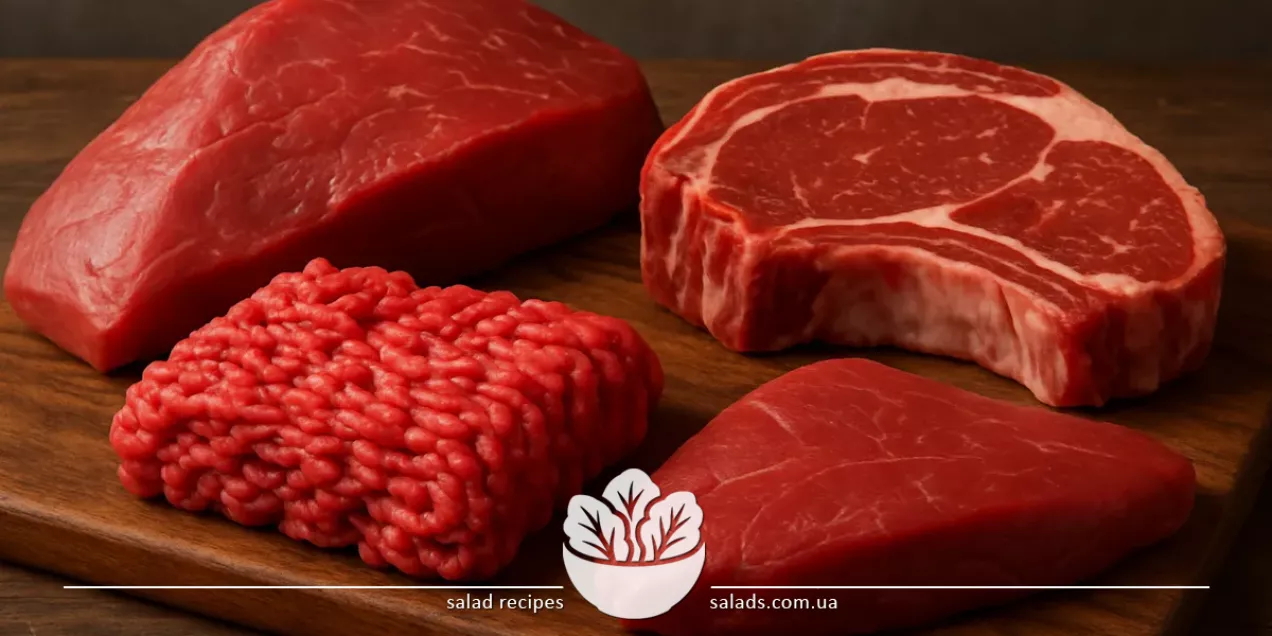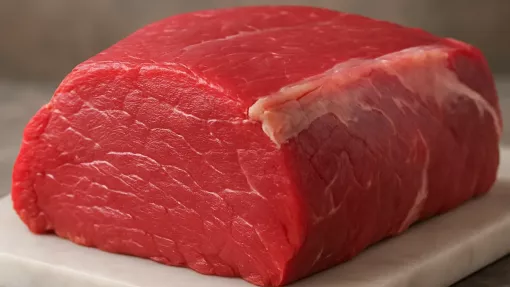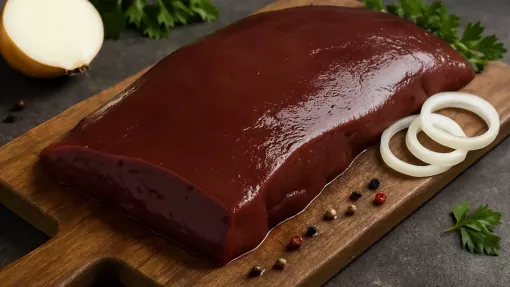Types of Beef

Types of beef cover a wide range of cuts that vary not only in taste but also in texture, fat content, and processing method. Beef is one of the most valuable meats in the world, used for preparing steaks, stews, soups, and many other dishes. In the meat category, beef holds an honorable place due to its nutritional value and versatility. It is important to understand the differences between main beef cuts to select the best option for your recipe and achieve maximum flavor and benefit.
Diversity of Beef Types
Lean Cuts and Fat Content: Choosing the Right Beef
Different types of beef vary in fat level, tenderness, and intended use. For example, shoulder meat contains more connective tissue and is suitable for stewing and preparing ragouts. In contrast, tenderloin is the most delicate part, perfect for steaks and quick searing. The choice depends on what dish you want to prepare and what flavor qualities you're aiming for. Bone-in beef, such as rib cuts, is known for its rich taste and is used for making flavorful soups and broths. Meanwhile, fillet is used for high-end steaks due to its tenderness and minimal fat. This variety allows chefs and home cooks to experiment with textures and flavors, creating dishes for any preference. For the best results, it's important to consider not only the part of the carcass but also the method of meat preparation. For instance, meat with coarse fibers requires extended marination or slow cooking, while a tender fillet can be seared quickly. To achieve the perfect steak, you should choose an appropriate beef cut like tenderloin or rib meat.
Types of Beef by Processing and Use
Beef is classified not only by carcass parts but also by processing methods – such as fresh, frozen, marinated, or smoked. Fresh beef retains the most nutrients and flavor and is used for steaks, kebabs, and stews. Frozen beef is more affordable and has a longer shelf life, though it loses some juiciness. Marination is a popular method to tenderize fibers and add new flavor notes. For example, marinated cuts with coarse texture are better suited for stewing or grilling. Smoked beef has a distinct aroma and longer storage time and is used in traditional recipes or as a delicacy. In cooking, there are also forms such as minced beef and products made from it, which are used for patties, meatballs, and sauces. The type of beef selected affects not only the taste but also the nutritional value and calorie content of a dish. For rice-based meals, such as pilaf or stuffed vegetables, tender cuts are often chosen as they cook quickly and stay juicy. In such recipes, it's common to include types of rice.
Popular Beef Breeds and Their Features
Among the many types of beef, certain breeds like Angus, Hereford, short rib, and others are especially popular. Angus is considered a premium breed due to its marbling – the even distribution of fat within the muscle, which gives the meat exceptional juiciness and tenderness. Hereford offers a harmonious balance of lean meat and fat, making it versatile for various cooking methods. Short rib – the rib section of the carcass – has a rich flavor and is suitable for barbecue, slow-cooked dishes, and soups. It is important to remember that each beef type has its unique characteristics that affect taste, texture, and cooking time. When selecting meat, it's best to consider the recipe and the desired result.
It’s also worth noting that different countries have their own beef classification systems and quality standards, taking into account the animal's age, feeding, and living conditions. For the best steaks, meat with marbled texture and freshness is recommended, while tougher parts are more suitable for stewing. For a wider range of flavors and textures, beef is often combined with other ingredients such as cheese, which adds depth and richness to dishes. These combinations are often used in signature dishes in restaurants.
Beef Cooking Techniques for Maximum Flavor
Proper cooking technique is the key to a tasty and tender beef dish. Different cuts require different methods: steaks are best cooked on a grill or pan to achieve a crispy crust and juicy center. Tougher cuts are ideal for stewing or slow braising, which helps soften the fibers and preserve flavor. Marinating is a popular way to prepare beef, enhancing its flavor and making it more tender. Marinades often include spice blends, olive oil, wine, or citrus juice. The duration and ingredients of a marinade depend on the type of beef and the desired result. Temperature control is also crucial – overcooking can make beef dry and tough. To retain juiciness, it’s advisable to use a meat thermometer and follow cooking times carefully. When combined with other ingredients, such as chicken eggs, beef can become the foundation for gourmet and nutritious meals.
Health Benefits of Beef and Consumption Tips
Beef is a valuable source of protein, iron, B vitamins, and other nutrients essential for a healthy body. It promotes muscle recovery, improves blood formation, and supports the immune system. It’s important to consume beef in moderation and choose high-quality cuts with balanced fat content. For dietary meals, lean cuts such as tenderloin or shoulder are recommended, along with healthy cooking methods that avoid excess fat and deep frying. Beef pairs well with vegetables, grains, and other protein-rich foods, such as types of rice, making the meal balanced and nutritious. Properly incorporating beef into your diet supports energy, endurance, and overall well-being. It’s also important to practice moderation and variety by combining beef with other healthy foods for optimal nutritional balance.

